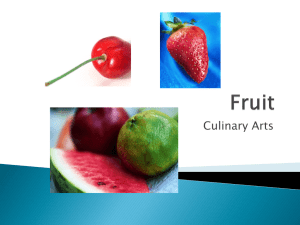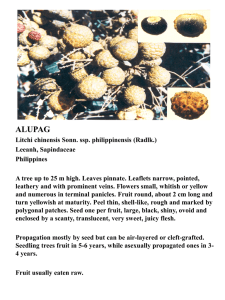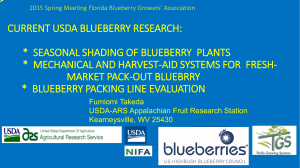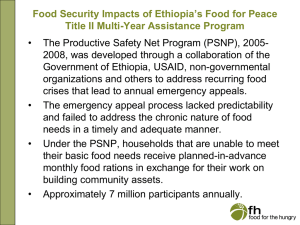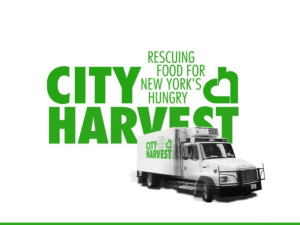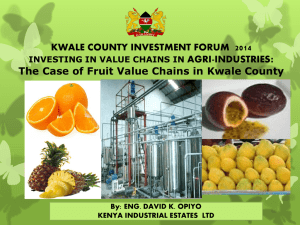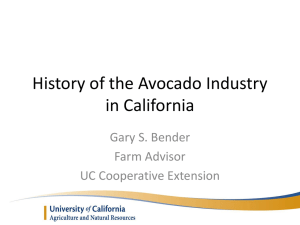powerpoint
advertisement
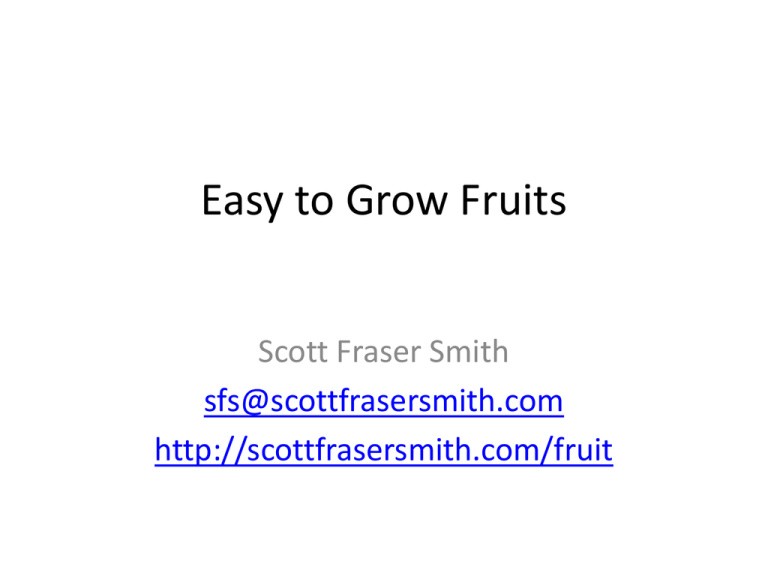
Easy to Grow Fruits Scott Fraser Smith sfs@scottfrasersmith.com http://scottfrasersmith.com/fruit Growing fruit is Great! • • • • • • • Eat more fruit for better health Save $$ on food Eat higher quality fruit Eat fruit varieties you will never find in markets Make jam, pies etc with large quantity Get outside and get some exercise Get more in touch with nature by learning more about trees, climate, bugs, etc • Use fruit in landscaping to get more benefit from work maintaining yard But, Growing Fruit is Hard! • Predation by squirrels/rats, birds, deer, … – if lucky a minor annoyance; often a battle • Bugs and Diseases – problems vary from minor to tree death • There is a lot to learn – It is more challenging than growing tomatoes or peppers The Spectrum of Fruit Challenge Easy - no sprays needed (but wildlife still a problem) • Figs, persimmons, pomegranates, mulberries, jujubes, bush cherries, pawpaws, nuts (chestnut/filbert), berries, muscadines, kiwis – START WITH THIS CATEGORY! Medium – may be OK with no sprays • Asian and European pears, sour cherries Challenging – requires sprays and will be very hard to grow organically • Apples, peaches, plums, apricots, sweet cherries Lets go through individual fruit possibilities, focus on easiest Fig + + – – – – Very tasty No-spray Must be eaten or processed soon after picking Can die back in colder winters Hornets, ants, and squirrels can be problems May split after rains, eye may let bugs in Celeste and Hardy Chicago good: low-split, closed-eye Figs are a Baltimore tradition in Little Italy Asian Persimmon + Very sweet and rich flavor – Not everyone likes the texture/taste + Even people not liking taste will like persimmon leather/pudding + Few problems with pests, no-spray – Stink bugs can do minor damage on fruits – Deer will eat fruits Two sorts: astringent and non-astringent Pomegranate + A resurgent fruit today due to antioxidants and yes we can grow it in Maryland! – Only the most hardy varieties will be reliable They are hard to find Kazake, Salatsvaki, Russian 8, etc + No pests, they appear to be no-spray – May die back in cold winters – May crack as they ripen Mulberry + Very tasty, much better than wild fruits + No-spray and a large crop when mature – Harder to harvest from a large tree (put down a sheet and shake tree) – Squirrels and birds love fruits, deer eat leaves – Varieties: Illinois Everbearing, Kokuso Jujube Aka Chinese dates, when dried taste like dates + no-spray + Fresh fruit taste like an apple/date cross + Trees have attractive shiny green foliage – May have problems with ants and cracking • Be sure to get fresh eating varieties – Li, Sugar Cane, GA866, Honey Jar Pawpaw + A Maryland native fruit, no-spray and easy to grow + Tastes like delicious banana custard – Tastes like tinny yucky slime to a few people – Spoils quickly, need to eat in a few days of ripening – Pollination can be dicey, need flies not bees Bush Cherry + Similar to sour cherries but no-spray – Seed is larger, hard to process them • Large bushes, not trees – Varieties: Nanking seedling; Crimson Passion, Carmine Jewel, Romeo, Juliet, Cupid, Valentine Chestnut + Very large trees, no-spray + Many pounds can be harvested – Blight killed most of the chestnuts in the US. + Chinese chestnuts are generally blightimmune as are some US-Chinese hybrids Hazelnut / Filbert + Easy to grow no-spray, tasty nuts – Squirrels love them and it is hard to protect the trunks as they are multi-stem bushes. – if you have squirrels and are not trapping them, pick something else to grow – Blight is also a problem with filberts Grow only blight-immune varieties Yamhill, Jefferson, Santiam, Theta, … Berries + Berries are in large part easy to grow + Some make wonderful landscaping – Blueberries, currants; grapes and kiwis on a pergola – Some are hard to keep looking like weeds Raspberries, blackberries – Berries are particularly liked by birds • Strawberries are grown more like vegetables – In a raised bed; weeds are a significant issue – We will not cover them here Blueberries + Very attractive landscape specimen, 5’ bush + Generally disease-free and no-spray – Need to net for harvest to keep birds off – Scares not reliable – The hard part is bed preparation; per plant add: – – – – Around 1/2 cu foot of peat moss worked in Elemental sulfur, about 2 cups per plant depending on soil pH Need pH about 4.5-5; so, need some way to measure pH Need to check and correct pH every 3-4 years Varieties – Southern highbush and rabbiteye best Raspberry and Blackberry + No-spray – Somewhat prone to diseases and viruses – Always start a new bed with virus-free plants – In our climate 10 years or less is the lifetime – Netting needed to keep birds off Easiest route: Erect thornless blackberries (no trellis required) Fall raspberries (no trellis and just mow in winter) Currants and Gooseberries Both are small bushes, 4’-6’ – May be restricted in MD soon unfortunately – White pine blister rust affects pines – Get WPBR resistant varieties – Plants do not like heat Recommend planting in partial shade Get more disease-tolerant varieties Some varieties work more reliably – Gooseberry: Poorman – Red Currant: Rovada, Jonkheer van Tets – Black Currant: Minaj Smyriou, Blackdown Muscadines + Very bug and disease resistant + Newer varieties are more sweet and flavorful Supreme, Sugargate, Darlene, Black Beauty, Tara, Ison, etc – – – – Need to build a trellis to hold them Need to prune back heavily Usually but not always hardy Not the same as regular grapes – some people will not like Kiwi Kiwis are a vine crop + No-spray, few pests (stinkbugs are my only problem) + Two types, both can grow here hardy (actinidia arguta), large grape size fuzzy (actinidia deliciosa & chinensis), grocery store kind – – – – – Similar to muscadines for care: trellis & prune Extremely vigorous: hedge back in May/June, July Male pollinator is needed which produces no fruit Leaf out very early, may get zapped by frost Many fuzzy varieties do not ripen here Grow the Saanichton variety, it does – eat in February Next: Some More Challenging Fruits • Standard “all in one” fruit tree spray is not going to work on half of the disease/bug problems • For organic its even more challenging • Path to success: scout–research–address all problems Outline • Different spraying philosophies • The more challenging bugs • The more challenging diseases • One-by-one through the fruits Philosophies on use of chemicals • No spray - I don't want to spray anything on my trees • Organic - I will only spray non-synthetic chemicals • IPM - I will spray synthetics but only what is needed, nothing more • Traditional - I spray a toxic concoction every two weeks, whether its needed or not Why does it matter? • More spraying is more work • Bug killers can be highly toxic to humans and pets • Some sprays may damage fish when they run off to lakes Plum curculio • • • • A small weevil with a very strong shell A huge problem on all pome/stone fruits Will ruin every single fruit if not controlled Organic control is Surround, a non-toxic clay powder spray – Need a constant coating, so re-apply after rains • Non-organic use pyrethrin (e.g. Triazicide), a poison Moths • Oriental fruit moth and codling moth • Like curculio they are everywhere and will ruin fruits if not controlled (wormy fruit) • Hard to control organically – Cut off drooping peach shoot tips in May – Surround will help; also include some Bt and/or spinosad, an attacking bacteria/virus – Mating disruption works but hard to source – Bag individual fruits in ziplocs or organza bags • Not hard to control with a few well-timed pyrethrin poison sprays Stink bugs • Getting to be a big problem with the brown marmorated stinkbug invasion • Makes fruit distorted; particularly bad on peaches, asian pears, apples • Not easy to control without poison sprays • Surround spray and hand-picking are the organic options; still will get some damage … And even more bug problems: Peach tree borer moth, cherry fruit fly, pear psylla, aphids, scale, pear leaf blister mite, etc Brown rot of stone fruit • A devastating disease, ripening fruits rot • Starting growers get lulled by early success – Takes about five years to really kick in • Very hard to control organically • Even with synthetics it requires multiple sprays of hard-tofind chemicals such as propiconazole • For low-spray growing, type and variety selection is key – apricots ripen earlier and often avoid it entirely, same for cherries • Japanese plums and some peaches can be fairly resistant • European plums are all highly susceptible Bacterial spot • Can defoliate trees and spot fruits • Requires copper spray in spring and fall to control • Important to seek out resistant varieties Other big disease problems on stone fruits: Peach scab, bacterial canker, black knot Fireblight of pome fruits • One day you have a nice tree, next day you have crispy shoots • Highly capricious, can stay away for years and then devastate in one day • No great sprays; copper early in season can help • Prune it out fast!! Cedar Apple Rust • Bright orange spots on leaves and bumps on fruit • Its often just cosmetic • Impossible to control organically, must cut down nearby junipers • Specialized synthetic sprays will control • Select resistant varieties Now for the challenging fruits • • • • • • • • Pears Sour cherries Japanese plums Apricots Peaches Apples European plums Sweet Cherries – Challenging, but rewarding if it works Pears Asian Pear + May be possible to grow with no or very few sprays – Stinkbugs can be a huge problem on Asian pears – Many other diseases and pests can wreak havoc: fireblight, pear psylla (though more of a problem on Euros), pear leaf blister mite, codling moth, plum curculio. European Pear: similar to Asians except – They take much longer to fruit – Hard to ripen properly requires early picking - cold storage – ripening – Somewhat less disease and bug tolerant Sour cherries + May be possible to grow with few sprays + A great fruit for cooking or drying – Can have problems with curculio and moths, but less attractive than other stone fruits + Trees are self-fruitful unlike sweet cherries, so only one tree is needed – Birds will clear the tree if they are not controlled Japanese plums + Good plums are never found in stores, you will be surprised how tasty plums can be + If you can beat back the plum curculio and moths, they can be relatively easy to grow – Brown rot is a problem on some varieties; get highly disease-resistant varieties – Varieties : Satsuma, Santa Rosa, Ruby Queen, Shiro, Methley, etc Apricot + Similar to Japanese plums in terms of difficulty; even more of a taste treat – Early blooming so spring frost can wipe out crop Variety: Tomcot - superior to others in all dimensions (reliability, taste, lack of diseases) Peaches + Much more tasty than store-bought peaches + Peaches like heat so in some ways they are happy in our climate – Moths, curculio and brown rot are HUGE challenges to overcome – Squirrels LOVE peaches – Many other problems as well: peach tree borer, peach scab, bacterial spot, etc. Varieties: Most varieties from eastern nurseries are OK Apples – They prefer a cooler climate – You are fighting against nature growing them – See above for moth, fireblight, cedar apple rust problems – Also many other problems: aphids, apple scab, etc + Home-grown apples are better than store versions, you can ripen them fully + There are many unusual varieties to grow – GoldRush, Williams Pride, Rubinette, Golden Russet Last but not least European plums – Huge brown rot problem on all varieties, on top of all the usual problems – Can take many years to fruit Sweet Cherries – The trees greatly dislike heat – Trees can get bacterial canker and die Variety selection critical: get Black Gold, White Gold Obtaining Fruit Trees • Local nurseries have limited selection – Valley View, Sun Nurseries are best? • Mail-order works well; required for some fruits • Most mail-order places are reasonable; some are bad and some are great – Avoid: TyTy, Aarons, Nature Hills, Willis – My list of good places: seehttp://scottfrasersmith.com/fruits Care of Young Fruit Trees Soil • Avoid heavy clay and poor drainage and you should be OK Location • Fruit trees MUST have 6-8 hours of sun per day • Don't plant at the bottom of a hill or in a dip in a very flat area frost pocket Planting • Dig a hole bigger than all the roots • Avoid the urge to amend the hole with anything • Put wood mulch on top in a 3' circle, and keep weeds away Watering • If 1/2” deep into the ground it is still dry, water • Overwatering can be as big a problem as under-watering Annual care of fruit trees • Overarching point – Happy trees resist bugs and diseases – Keep trees happy and you will have a third of the problems • Fertilize in spring – a shovel of compost and a handful of 5-2-5 or similar • Water in prolonged dry spells (only) • Mulch with wood bark annually, keep weeds away • Prune annually – Thin out the branching structure - "a bird should be able to fly through it" – Head the top if you want to keep the tree pedestrian height – Pruning is an art taking years to perfect Squirrels (& Rats) • Squirrels don't share - they will take every last fruit on the tree • They will gladly eat most types of fruit Control • If trees are isolated from other higher obstacles can baffle the trunk • If not, you will need to trap them (Havahart, Kania brands) – Trapping is a skill that takes practice and perseverance Birds • Birds love berries and cherries • Apples, peaches, and plums will get pecked on Controls that work • Net the trees top to bottom when the fruit is ripening • Put up scares right as the fruit is ripening, take down right after – I use old CDs/DVDs on string with good results – Can get used to anything left out too long Deer • A horrendous problem in recent years • Lower shoots nibbled away, fruit within reach eaten, bark rubbed off Controls that work • 8' deer fence around the entire orchard area • Protection of individual trees with 6' hi x 3'-6' dia. cage • Let trees grow to be above deer height • ScareCrow motion-activated sprinklers Controls that may or may not work • Sprays, hanging soap, deterrent bags, zappers Resources • See http://scottfrasersmith.com/fruit – Links to useful online guides, etc.
